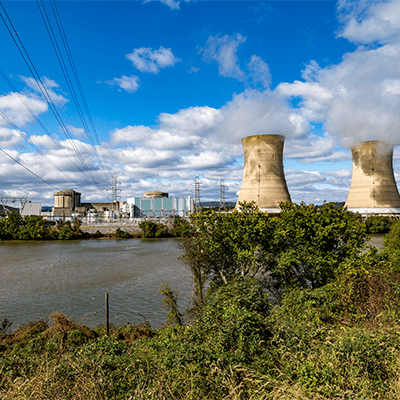Two things are on my mind today: energy security and passive investing.
We’ll explore why they’re linked… and the inflection point that’s been quietly building in the markets.
Now more than ever, you can’t afford to be passive…
Mike Alkin
Ep. 73: Don’t be passive at an inflection point like this
The Mike Alkin Show | 73
Don’t be passive at an inflection point like this
Announcer: Free and clear of the chatter from Wall Street, you’re listening to, Talking Stocks Over a Beer. Hosted by hedge fund veteran and newsletter writer, Mike Alkin. Who helps ordinary investors level the playing field against the pros, by bringing you market insights and interviews with corporate executives and institutional investors. Mike sifts through all the noise of mainstream financial media and Wall Street, to help you focus on what really matters in the markets. And now here is your host, Mike Alkin.
Mike Alkin: It’s Monday, September 16th, 2019. Hope you had a good weekend. I had a busy one. It was a good weekend, busy weekend. The raccoons won. So for those of you how listen to the podcast, you’ll know that I’ve had an ongoing battle with the raccoons in my yard, because they get into my garbage. And I’ve had a lot of nice people with suggestions send in on how to deal with it. The challenge is, I don’t always take the garbage out. So sometimes … I mean the bungee cords were working, but when my teenager takes it out he forgets. No matter how many times.
Just like when I ask him to pick up his clothes, as it’s a trail from the bathroom to his bedroom. I’m like, “Why do we need to see everything on the floor? That’s what the hamper is for.” But anyway, so he’ll forget sometimes to put it in. So I finally said, “I can’t deal with this. I can’t go outside anymore and have to pick up just garbage bags all over the place because they got into the garbage, and it’s a calamity.” So, I bought a storage unit for it. And I bought it on Overstock. And they sent it to me, and it was like a 200 pound box in the front of my house.
So this weekend, yesterday, I decided I was going to put it together. And if you’ve been listening to the podcast, for the last year and a half or whatever, you’ll know that I’m not the handiest guys in the world, but I try. I get an A for effort, and D for results. But I think it’s important to try. Especially I think, it’s really important for me, for my kids to see that we don’t just pick up the phone and call everyone to do everything, right? If I could do something, I’m going to do it myself.
I like to … I think I told you a while back, I had some painters come in and give us quotes on my daughters’ bedroom, and it was offensive. It was the principle of the thing. You’re not going to come in here and just pull up, think, “Oh, reasonable house. Nice house. I think I can charge them whatever I want.” So I decided that I was going to do it, and I did it. It came out beautiful. And my daughter said, “Wow, dad. I’m impressed.” So I try and do things as much as I can around the house, but I’m just not gifted. And it’s a shame because I was raised by my grandparents.
My grandfather was a longshoreman. He was a mechanic, a decent mechanic. And he used to just look at me and shake his head. Because I get a deer in a headlight look whenever I have to do something. But I’m a reasonably bright guy. I’m not the sharpest tool in the shed, but I should be able to do your basic things. And I’ve gotten better over the years. I could use a screwdriver. I could use a hammer. A saw, I’m dangerous with because I still need my hands. But I’m not too tired. I can take things down, I can’t build thing.
But putting things together, I have to be careful with. I’ll never forget my daughters first tricycle that I put together. It took me hours. I think it was … We were living in Manhattan at the time in an apartment. And I had the whole apartment was full of stuff. It was a tricycle. It wasn’t that complicated, but we then put it in the car, and we took it out to my in-laws house in Long Island. And we were all excited because our daughter … I’m going back many years now, she was going to ride her tricycle for the first time. And we put it in my in-laws driveway, and we put her on it, and she took one peddle and the whole thing fell apart.
And my father-in-law from that point forward said, “You’re never touching anything that my granddaughter’s going to ride in or be in again.” So from that point forward, I always had a Christmas toy put together person, and my father-in-law. Anyway, so this weekend I get the box, I open it up. I mean how complicated could it be? It’s a storage shed. It’s, I don’t know, three foot by six foot. You open the doors, you put the garbage pail in. It took me 20 minutes to get all the parts out. And the instructions and the doors, and the roof and everything else.
So my wife and daughter were going out, they came in through the driveway. They looked at me, my wide started laughing and my daughter said, “You got to be kidding me.” I said, “No, I’m going to do this.” So that was 8:00 AM yesterday morning. And they went off, I think they went to SoulCycle, and they went riding, spin class. And I finished up about 2:30. Six and a half hours to put together a tiny, tiny storage unit. And I can’t tell you how many times … The instructions on these things are impossible.
You need to be just gifted to be able to do this. No matter how many times I put the door on, I had to take both doors. I put them on, I put all the hinges on. I screw it up, and they don’t … Only have a few holes. So you got to take the screwdriver and put the screw in, and do it. And the way with the angles you couldn’t get an electric screwdriver, so I had to use my hands get it in. I think I’m done. I look at it, and I said, “Well I’m going to put the handles on.” Oh, but the one area they have the pre-drilled screws is for where you put the handles on, and they’re at the bottom. I put the doors on upside down.
So I had to take the roof off. I had to everything over again. Anyway, six, six and a half hours later, I got it. Went outside this morning, nothing. Raccoons don’t have opposable thumbs, so they can’t lift this thing up. So I am as happy as can be. It was well worth it. My family got a good laugh out of it. Pretty excited. And then my wife had a flat tire. Or the air was low. So I think I told you a few weeks back, I bought a Buick Enclave. We love it, right? We looked at the Mercedes, whatever it is. The 450. We looked at the BMW X5. But my wife likes that you can go in the third row, and you can walk back. It’s go [inaudible 00:06:55] captain chairs.
So she likes that about the Buick, and all the others. I got to tell you, we looked at both these cars, and we’re like it’s … I don’t know 60% of the price of the others. Drives beautifully. And it’s great. And it has all the comfort creatures that we need. So Buick Enclave, driving it around. Really like it. My wife said, “This is great.” So her tires are low, so I bring it over to the Goodyear tire store. And I’m waiting, and I’m waiting. And the guy says, “Okay, you’re done.” So I go in and the guy gets to the counter and the guy says to me, “Okay, your moms’ car’s done.” I said, “What?” He said, “Oh, I assume this is your moms car.” I said, “Well why do you assume that?” He says, “It’s a Buick.”
I said, “Yeah, it’s a Buick Enclave.” He goes, “Nobody under 75 drives a Buick.” I said, “Come on, dude. I mean it’s a nice car.” He said, “No. Okay, if you say so.” I said, “Do you realize in China that it’s like a luxury car?” He goes, “We’re on Long Island.” I said, “Okay, thanks.” But I got to tell you, it gets a bum rap. They need to improve the marketing, but it really is a great car. I’m really happy with it. But I got told I was bringing my mom’s car in. Anyway, tonight big night. Monday night football. Jets, Browns. J-E-T-S. You know I’m a miserable New York sports fan because we just suffer in misery. And we’re always disappointed. But it’s early in the season.
Sam Darnolds, now he’s got mononucleosis, right? So we have no quarterback. Trevor Siemian is back there, but we’ll see. But a little something to look forward to. But more importantly tonight, the NHL preseason starts. The Islanders are in Philadelphia. And I can’t even tell you how fired up I am. So we’ll see. It’s already doom and gloom around here with the Giants, they’re 0-2. And Sports Radio’s lighting up. I think misery is what a New York sports fan deals with.
So anyway, a little interesting news over the weekend with the refinery in Saudi Arabia getting blasted by who knows who. Nobody’s … Well Yemen’s taking responsibility, but the Americans are saying Iran is doing it, but what we did see is that oil shot up. I think Brent opened up 20% overnight. WTI’s up. Last I looked, 10, 11, 12%. And the oil stocks the shale stocks are ripping. Absolutely on fire. I was looking at some stocks up 30, 40, 50% as we were going. You know it was interesting, I think if you’ve been listening you’ll know that I’ve been bearish on the shale plays. As I think that they’re really nothing more than just a beneficiary of easy monetary policy.
Where people are looking for yield, so therefore all of these non-productive wells, these cash flow negative wells they keep producing more and more. And it seems to be at any price. Most of them don’t make money, and you’re just throwing good money after bad. But you’re starting to see, when you look at the junk bonds that finance these things, you are starting to see some of them come under pressure rates for those that are going up. And shareholders are coming in a demanding cashflow. And you’ve seen discipline.
So it was one of these things where it was … But the bear case was so price for perfection in the newsletter a while back I laid out, maybe four or five months ago, why I don’t like the shale place. And why I think they’re going to struggle. But I didn’t want to short any of them because what I know, or what I was thinking about, wasn’t really … I mean there’s two schools of thought, right? There’s some who don’t believe that side of view, and there’s other who do. But I felt like it was kind of price for perfection.
And I like to look at things, where if something’s … Especially in a bear case, when everyone knows it, and you got to be really careful in how things are priced. Now during the summer months, these names were starting to get hammered. So you started to see some of these things get crushed. And all of a sudden, some exogenous event comes, right? But that’s always a risk that’s out there. I mean there’s always a supply shock that’s possible when you’re investing in these deeply cyclical industries with commodities.
Energy security’s a big deal. And you see how overnight, right, 5% of world supply is at risk, and they’re not going to be able to get it back at full production for a little bit now. And people freak. So some of these oil service stock you’re starting to see rip too. And the reason I chose those at the time were, I thought, “You know these things, offshore plays. Been hammered, left for dead at the time. Trading for a third or half of tangible book value.” So essentially you could shut the company down tomorrow, sell your assets, and you make money.”
Not going to happen, but in theory, that’s what you’re thinking. But rather than chase the momentum down, saying, “Okay, these are obvious shorts. Let’s just chase it down.” What’s a way to play it that people aren’t thinking about? What’s been left for dead? What is not priced for perfection? Meaning, what are people thinking about that … What are people not thinking about? Where is there a value that people aren’t looking? Where is there a lack of institutional ownership? Where is there a lack of interest? Is there some sort of value that can be had there? Versus …
And the same thing on the long side too. Everyone likes it, and everyone’s doing it. Chances are it’s not going to really keep working because there’s nobody really on the other side of that. And same thing, to me, the shales were such a layup, meaning they’ve got to cut production. You’re going to see … You need to see some cash flow improvement. But while that’s working its way through, all that disappointment of lack of … Or slowing production growth, the stocks get hit. But you don’t know when that’s going to turn.
So you look for things where the expectations are washed out. I’m going to say, long or short side where the stocks ripping to the upside and everyone loves it. What’s the counter point? What the counter argument to that? And is that being priced in at all? Because if something happens it’s, “Look out below.” And the same thing on the short. If everyone expects something to happen, it doesn’t take much to turn it. And today you’re seeing it in the shale names. And these oil service stocks are ripping nicely.
And what drove the comfort with those picks were that valuation, and bad news was not being absorbed as negatively in the stock prices. You get to a point in deep cyclicals where when something is bad it’s almost like bad is good, right? Because it can’t get any worse. And when you see the market, or when you see bad news come out and you see stocks not reacting to that, it’s a really great sign. You conversely, if you own something, and you see great news and the stocks aren’t going up as you thought, that’s something you really need to pay attention to.
So I think that those things are really important side. And with the energy security today, it always … You think about that in all commodities, right? I’m not sure how much … I mean people talk about geopolitics, people talk about the risks involved. But when you see a move like this today, you have to ask yourself when Brent is up 20% and WTI up 10 or 11, some of these stocks up 30, 40, 50%. How much were people thinking that these risks are really real? And things happen, right? Whether they’re floods or accidents, or terrorist attacks. Stuff happens, and it’s nice to find things at extremes where they’re not getting priced in.
And I think a lot about, obviously something that’s very close to me that I pay a great deal of attention to is the uranium space. In uranium, you think about security, of supply, right? That’s what we’re talking about with the reaction to the oil. What happened in Saudi now it’s about security of supply. It’s about being able to meet demand because you have enough product to be able to do what you need to do. And I go back, I’m often reminds me of when I think back to the last Uranium Bull Market, back in ’04, ’05, ’06, ’07 is when you saw prices really rip.
But in 2005, or 2006. October of 2006, you saw a flood at the cigar Lake Mine. And Cigar Lake was supposed to come online, and it was going to come on at 18 million pounds, it was supposed to come online. But that was a ramp up. You were going to get 7 million pounds in ’07. You were going to get 9 million in ’08. 16 million in ’09, and then in 2010 you’d be at 18 million pounds. But in October of ’06, there was a flood. And they said, “Hey, this is going to curtail this for a bit.” It wasn’t really clear.
And at the time uranium had ended ’05, it’d be average spot price. During the year, the average was about 25 bucks. The average long-term contract price was about 36. Then your floods came, and you saw in 2006 the price had shot up, the average spot price for the year was 47. The average long-term price was 72. Now in today’s dollars, 72 was like 90 back then. So what you’re looking then … But it’s interesting because I talk a lot about, pay attention to where people aren’t because at the time … And the reason when there’s not a lot of eyeballs on something, you can catch mistakes. You can catch apathy. You can pick off sentiment.
And at the time, if you were to think, if you were to put yourself in a fuel buyers share in October of ’06, when Cigar Lake floods, and you’re thinking, “Okay, well what’s going to happen?” Okay? Right, so the headline is the worlds’ biggest mine is not going to be producing maybe in the future as you think about it. When you think about thought, at that time if you looked at four or five years forward, what was ’07, ’08, ’09, what was supplied demand going to be? Well if you looked at 2007, because you’re sitting now on October of ’06, you’re sitting in 2007, you’re looking at your demand a bit short of 170 million pounds.
And you had existing supply, plus new mines of 13 million pounds coming online. And again, 7 was supposed to be from Cigar Lake. And then you had secondary sources of supply, which was about 53 million pounds, but your total supply was going to be about 181 million pounds in 2007. So you would have had about a 14 million pounds surplus, and then you hear that this the mine is flooded. You don’t know what’s going to come online. So that year, where you were supposed to get 7 million pounds, you might have thought, “Well.” And investors might have thought, “This is not going to come on. Right? So, wow the price should go up.”
Well if you look at what the supply demand situation was, and you were to back out the mine that’s not coming online, you were still in a surplus that year. About 7, 8 million pounds. And then if you look forward in to ’08, you had 15 million pounds coming online in new supply. Nine of which was coming from that mine that might not have come online. And again, whether you’re a stock buyer, or fuel buyer, you got to think of what’s going to happen. And then in ’09, you were going to have 26 million pounds coming online. 16 of which from that new mine.
Again, you don’t know if that new mine’s coming back. And then in 2010, and we often talk about in mining, especially in uranium mining, that five, six, seven years is yesterday or tomorrow. You had 48 million pounds coming online, and 18 of which was coming from that one big mine. So, you still had a lot of excess supply. And if you did all the math, the supply demand math, you would have looked at each of those next ’07, ’08, 9, 10 you were probably in a surplus. Even accounting for that. But that big headline gets people freaked.
And you saw the spot price go from an average in ’06 of $47, in ’07 it went to $90 on average. Average long-term price was 95 bucks. The high for the spot price was 137. Then in ’08, ’09, and ’10 it settled in a little bit, but it was still trading at $62 in the spot price in ’08. $70 in the term market, and then as you went down, it was trading average long-term pricing was about 61 through 2010. But it was all during a period where sentiment, if you talk … I hear people now say, “Well it was … Don’t forget you had the flood.” “Yep, had the flood. What else you got?”
We had the flood. You had still what would have been a surplus because you had new minds coming online. You had 24 reactors under construction at the time. You have 50 now, 50 plus. And you have a zero, repeat zero new mine supply coming online today. Unless the price of uranium doubles from here. So, I think it’s really important when you’re investing to go back. And I often say, history, obviously it doesn’t repeat. This is not my saying, but I copied it. It doesn’t repeat, but it often rhymes. Especially in cyclical industries where you’re dealing with a lot of … It’s human behavior, right? Supply, demand, and at the extremes is where you really tend to see complacency, and apathy, and recency buys, which you hear me talk ad nauseam about.
But it’s so true. And I think it’s important when you’re analyzing any market, to go back into time and say, “Okay. I’m an investor during this cycle … ” Don’t just look at the numbers. Don’t just look and say, “Oh, what were they?” You have to go back and say, “Okay, what … I’ll look at the numbers for that year.” Go back in time and read. Right now I get access to institutional research so I can see what that was, but I also could Google and find stuff. You could find trade journals and other stuff. But go back and look.
And whatever you’re looking at, go back and look and read annual reports of companies at the time. Read the chairman’s letter. Read what they were saying. Listen to conference calls [inaudible 00:23:01]. And you can find transcripts, old transcripts. What was the environment like? What were expectations like? It’s important to know from a uranium investors’ perspective is, if I’m sitting in that investors’ seat, or that fuel buyers’ seat, and something happens just like it can happen now. What was I looking at? What were the expectations? Okay, a mine goes down. It’s flooding. Well that’s not the only thing that’s going on.
Were there other mines expected to come on? When were they expected to come on? How many pounds were they expected to deliver at the time? Because that will help you understand what the behaviors were. You see the end results and the numbers, but you didn’t know what the expectations were at the time. And it’s really important to do that. They’re not just numbers on a spreadsheet, numbers on a page. You got to put yourself in that seat. What would you have done if you thought there was a surplus in uranium, why do you think you saw the price spike? Right, I mentioned through 2010 there were 48 million coming on.
The next year, I mean they were ramping and ramping. Mines were coming on like crazy. That Kazakhstan was booming. Other mines were ramping all over the place. It wasn’t just one mine. It was coming from everywhere. When you look out in ’08, you had the Cigar Lakes, you had [Kyla Care 00:24:44] ramping. You had Langer Heinrich ramping. You had a big expansion at Rössing that was expected. You had [inaudbile 00:24:50] and Kazakhstan coming on. You had a big Olympic dam expansion ready to take place. You had a lot of mines coming online. I’m just naming a few. A lot of pounds, not too far out in the future.
But you had many years of complacency throughout the ’90s, the late ’80s. Since after Chernobyl. The late ’80s, the ’90s. Where the price didn’t go anywhere. It went down 7 bucks, 8 bucks, 9 bucks, 10 bucks. Sat there. And then it takes up a little. And it takes up a little. Then you read the commentary from back then. “Eh, it’s taken up a little bit. Eh, there’ll be plenty of supply. We’re not that worried about it. There’s always supply. It will come.” And then it goes from 10, it goes to 12, it goes to 16, it goes to 25. Then it sits there for a little while. And then there’s a hiccup somewhere, and then next thing you know it’s off to the races. Right?
And that’s why by doing your homework, whatever deeply cyclical industry you’re looking at, we talk about going back to that time period. I can’t stress that enough. But really understand and be a student of it. Be a student of the history of it. Not just the numbers, but the psychology at the time. And that will tell you. Because my team and I, we’re in the field talking all the time to people in the industry. And there’s a difference between … I’m an investor, so I have a good recollection of … I think in terms of different periods, different financial crises in my head. So you kind of remember things, but you forget it a lot, right? But that’s my industry.
So I got back and read books all the time. I used to refresh myself. And in any industry, whatever I have looked at over the years, you talk to people and it’s experience. There is no substitute for it. But it doesn’t mean, just because they have experience that the buying rationale has changed. Or it doesn’t mean the buying rationale … What’s the motivation for buying? What makes somebody sign a contract when the price was 36 in 2005, what makes them sign a contract for 95 in ’07? When it ’05 they didn’t think they had to worry about it at all. Did the world change that much? Did supply demand dynamics change much? Or did sentiment change that much?
And if sentiment changed that much, you got to ask yourself, what were they missing a couple years ago? Because again, in the world of mining you know these things are coming, right? Here we come. Just like a reactor on the construction, it’s going to take you seven, 10 years to build. You know it’s there. You know the mines are coming. You could see the numbers. Okay, yeah. You had a flood. But you could see all the other mines that are coming. So, you knew that, yes it might be less supply than we thought, but it’s still a surplus situation. So what’s driving that? What’s driving that panic? What’s driving that fear? What makes you go from contracting 30, 40 million pounds at the trough, to contracting 240, 225, 200, 130, 130, 250 million pounds a year?
When prices are low and you could go out and buy it on the cheap, you’re contracting 30, 40, 50 million pounds a year. Instead, you’re out buying 5X the amount of volume you need when the price is up 3X. What’s the rationale behind that? And again, conventional wisdom and sentiment here, “Well don’t forget, there was a flood.” Check, got it. What else you got? Come on. Give me something else. “Well inventories were lower then.” Yep, check. Got it. What else you got because they’re not too out of whack now. At all. They’re not out of whack. They were lower. A drop lower.
But we’re talking a lot’s changed. There was much less known then. And commercially available inventories. There was a lot of movements in the market. You had secondary supplies. And by the way, secondary supplies were higher then, than they are now. Secondary supplies then were 55, 53, 57. You name it. They’re going to be the high 30s, low 40s now. And here you see the price [inaudible 00:29:46] 25 in the spot market. 32` in the term, that’s the reported term price, or deals. We believe strongly that there are deals being done higher, but the price reporters they’ll get around to that one day.
But that’s how you find value. That’s how you find things that you can pick the market off. Now, it takes time sometimes, right? It takes a while for things to get worked out. It takes a while for people to some around to a certain way of thinking. Right? That bottoms, but that’s where it always goes, back to the risk reward. What’s the risk you’re taking, versus the reward you could get? I don’t know. You hear me say it all the time. I don’t know [inaudible 00:30:30]. Some percent down, and multiples up. How long? Take a couple years? So what?
Anyway, I was talking to a buddy of mine, his name shall remain nameless. He didn’t want to mention it. But it’s interesting now, we’re seeing a little bit of a mean reversion. And he brought this to my attention, I kind of … I might have felt it. I might not have. Just by looking at names on my Bloomberg screen. But he was able to put it more into context. And we were talking about value versus momentum and growth. And he said, “You know it’s kind of coming … You’re starting to see a little bit of a mean reversion takes place.” And that’s like one of the oldest things on the market, is that markets revert back to the mean.
And he pointed out, he’s like, “Look, it’s been almost 10, 12 years that this huge outperformance of growth over value might be unwinding itself.” And I remember that vividly way back when, when the internet bubble was around, and value investors they couldn’t … They were just getting run over. And if you were a long/short hedge fund at the time, you were short growth and momentum, and you were long value. It was not a good recipe. Because the growth stocks were going through the roof, and the value stocks didn’t go anywhere. So your shorts were getting hammered and your longs were dead money at best.
So I remember what that was like back then. But in a bear market who knows what the market’s going to bring? We don’t know what’s going to happen. But we’re starting to see a little bit of reversion, and if you think it’s certain periods. And he brought this up. I said, “Oh, you know what? You’re right.” If you think about you go back to the early ’70s, you had the NIFTY 50 growth stocks, right? And then the period I was just talking about, you had the IT stocks in the late ’90s. The internet bubble stocks. I remember going to meetings and listening to the nonsense that these internet companies were talking about. Being valued on a per eyeball basis. And [inaudible 00:32:50].
It was just comedic. But it wasn’t comedic if you were short some of these things, you had to be careful. And then what you saw, is then when it turned, I think at the time … I forget. It might have been 2001. The great, great value investor Julian Robertson, of Tiger Management. He finally said, “No more.” And he closed his shop. And he’s from there. You had so many wonderful hedge fund managers called, the Tiger Cubs that went on to become just legendary in and of themselves.
But at the time, he was a deep value investor. And finally yet by the peak of the internet bubble, he said, “No more. I’m done.” And he kind of wound up and I think he turned it into a family office, and seated a lot of these guys who went on to become legendary hedge fund managers. And value took off. You saw that take off. It ripped and outperformed growth for a long time. Well if you were to look at a chart, you would see that the outperformance of growth and momentum over value is as extreme as it’s been back to the late ’30s.
And you’ve had it now for about a decade. But you’re starting to see the recovery of value versus growth and momentum really started, I guess about a month ago. Out of nowhere. And who knows why, right? Sometimes these things just appear. And yet you have to wonder, how much this continues. Is it a blip? I don’t know, but it’s something to pay attention to. And if you think about all of the passive amount of money, active management versus passive. Active is, let’s say, a mutual fund or guys who are trying to pick stocks.
Passive is index funds. You just put it in and let it go. And you’ve had so much money flow. And I don’t have the numbers in front of me, but it’s been massive, that have driven the performance for the S&P. It’s just constant inflows, right? Low interest rates, people putting money into the stock market. So it’s really something I think that’s warranted. And JP Morgan’s been out recently talking about the rotation. That’s something that you need to start paying attention to.
So it’s you can’t make these calls, but we talk a lot about bull market, bear market as a market, are there bubbles? I don’t know, but there are undercurrents that you can see, but so much has been driven by these big growth stocks. And then think about the names that people uber beyond me. I mean I could go on and on. My favorite test, my right like it makes no sense, but for a long time it was growth at any cost, profits be damned. And what you’ve seen is investor positions become very crowded in a lot of those names. But also in the higher quality growth names. And the momentum names.
And if you start to see those unwind, I mean that could be very painful. I think Morgan … He was telling me … Was it Morgan? Or Goldman? I think it was one of them. That one of the big banks did some data compilation recently and showed something like $80 billion has flowed out of a cyclical ETFs into defensive high dividend, low volatility funds over the past while. So it’s just in the add to that. You got a lot of economic uncertainty that’s taking place. You’ve got an inverted yield curve. And you’ve had these big high growth techie names that have just been banging out, and they’re passively managed, right?
So it’s not active management, it’s just money flows. And if people start to get nervous, and you start to see it rotate out, you know that’s something that you really need to pay attention to. And you start this reversion back to where active management becomes a big deal again. And what you’ll also see is that value, value style, tends to have a very low correlation with the overall market as a whole. So just something to really think about
And when you … What is it? Was it … Not a Black Rock. I’m trying to think of who it was. When you think about the index funds, I’m just looking through my notes here about what he told me. I don’t want to get the wrong name. So I’d say one of the big firms. I mean they control, I think he said, $12 trillion in assets. It was up from 8 trillion five years ago. I mean passive funds. I mean that’s a lot of impact on the market if you start moving. And then he was telling me he was reading something from Mike Burry from The Big Short. He was talking about other bubbles and stuff.
And he said, he thinks that … He called the subprime bubble and all that stuff. And he thinks that in an article in Bloomberg … I think. Was it Bloomberg recently? Yeah. I think that’s what my notes say here. That he was talking about passive investing has removed price discovery from the equity markets. The simple things, a thesis, a model. The things that get people into sectors, into indexes, into mutual funds, right? The things that get them there, are not there.
But then if you look at the things of factors and indexes, and other ETFs, and mutual funds mimicking the strategy more quantitative, more price driven. Talking about those price-driven strategies that don’t require security level analysis that’s required for true price discovery. And according to … My buddy was telling me and reading this article, and I just didn’t have a chance to find it. He likens it to the bubble in the Synthetic Asset-Backed CDOs, before the great financial crisis.
And that price setting in that market was not done by fundamental security level analysis, but by massive capital flows based on all these fancy risk models that turned out to be dog shit, right? He didn’t say that, but those are my words. And one of the things that he pointed out was that passive investing is a bias for these big companies. And their scale makes them adaptable to different index constructions. So if you’re in these, you got to think about it. Right?
If while you’re doing your work, you’re doing your research, just check on, see what’s happening. See what the big growthy names are doing. You know what they are. Look to see what the out of favor names are doing. Start to think about that. Think about how your portfolio’s positioned. So anyway, it’s going to be interesting to see how this whole Iran thing plays out. But do keep in mind, because I know a lot of you who listen to this are … And I can tell by the listens. If I talk about something plain vanilla, the audience is much smaller, right?
If I talk about anything cyclical, it’s through the roof compared to the other. So, I know that. And the feedback I get, there’s a lot of speculators, a lot of deep value guys who are listening. But really think about that. It’s an important point I want to drive home. And I started to think about it when I saw this snap-back in prices. I was like, “What? Really? Like every day you … Something’s going on in the Middle East. Anything can happen. And now all of a sudden it’s a shock? This is so surprising? Somewhere along the way this wasn’t getting priced in?”
Well that’s what I liked about the offshore service stocks is, they were being priced as though nothing good was every going to happen. And it had valuation support. So anyway, I’m going to keep it a little bit short this week. I know it’s under an hour, but busy day in the markets, and I got some stuff I got to get done. So I will be back next week with an interesting guest. And I hope you have a good week. And I’ll talk to you next week. Thanks.
Announcer: The information presented on Talking Stocks Over a Beer, is the opinion of its host and guest. You should not base your investment decisions solely on this broadcast. Remember, it’s your money and your responsibility.

















